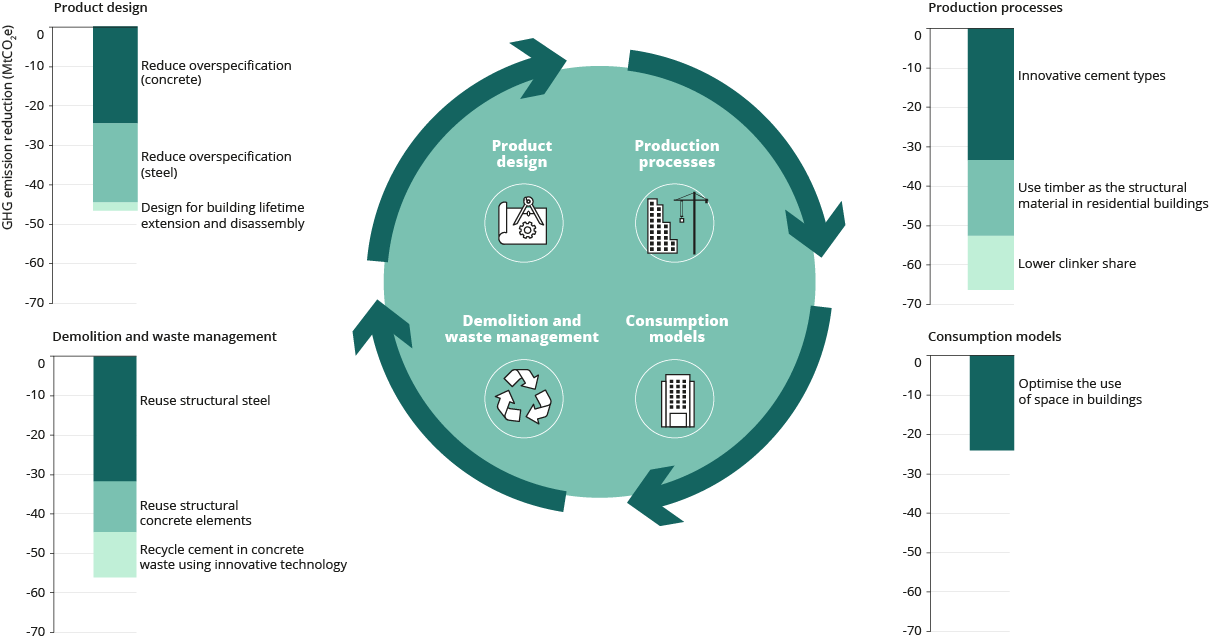An article named “Cutting greenhouse gas emissions through circular economy actions in the buildings sector” was published by European Environment Agency on 9th of July.
The key messages of the article are:
- Greater circularity and more efficient use of materials present new opportunities for further reducing greenhouse gas emissions.
- A new methodology can help to identify which circular economy actions in each sector can make the most promising contributions to meeting targets to reduce emissions and to achieving climate neutrality in Europe.
- In the buildings sector, selected circular economy actions can lead to reductions of up to 61 % in the materials-related greenhouse gases emitted across buildings’ life cycles.
The article is based on a study conducted by Ramboll. The results of the study are shown in Figure 1. The figure demonstrates that all four phases of a building’s life cycle offer opportunities for substantially reducing emissions. The greatest potential is in the design, production and demolition and waste management phases, which also reflects these phases’ heavy influence on material flows.

Source: Ramboll et al. (2020).
Most of the shortlisted circular economy actions are promising as pathways towards reducing emissions in the next 30 years. However, three offer the greatest reductions compared with the baseline:
- in the design phase, 12 % emission reductions through reducing overspecification of concrete in building plans
- in the production phase, 16 % emission reductions through using innovative and alternative cement types
- in the demolition and waste management phase, 15 % emission reductions through reusing structural steel.
These three actions focus directly on making the flows of steel, cement and concrete more efficient, as these constitute some of the most emission-intensive materials used in the buildings sector. This emission intensity applies to the design phase, where overspecification drives up the use of greenhouse gas-intensive materials without a concomitant increase in quality. It also applies to the construction and waste management and demolition phases, where choices in the handling and possible reuse of these materials can have a critical impact on the resulting emissions.
Circular economy actions that reduce the demand for such emission-intensive materials can therefore deliver some of the most promising emission reductions in the material flows of the buildings sector, especially within the 2050 time-frame of this study. This makes these types of actions ideal for inclusion in roadmaps towards major emission reductions by 2030 and climate neutrality by 2050.
Sources
https://ramboll.com/media/environ/decarbonisation-benefits-of-sectoral-circular-economy-actions














